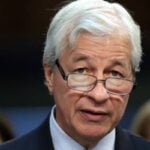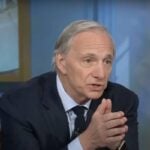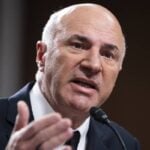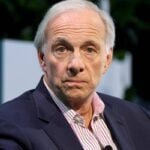Vince Vaughn made a name for himself in Hollywood by starring in some of the biggest comedies of the 2000s. But instead of squandering his success, Vaughn took a different path: protecting his earnings through smart investments.
“I was fortunate to make money at my profession, and I didn’t want to lose it,” he explained in an interview with business coach JT Foxx.
Unlike many of his colleagues, Vaughn took an active interest in managing his finances, noting, “There were so many actors I knew who were intimidated and didn’t deal with it.”
Vaughn took the initiative, making his first major investment in gold.
“So I thought, I want tangible assets. First, I bought some gold, but there’s no passive income off of it,” he recalled.
Gold is indeed a tangible asset and a well-known hedge against inflation. The reason is simple: unlike fiat currencies, the precious metals, can’t be printed in unlimited quantities by central banks.
However, as Vaughn discovered, gold doesn’t generate income on its own.
To create that steady income stream he was after, Vaughn turned to real estate.
“So I just started to buy some small buildings that I could rent out,” he said. “And I knew that the buildings would go up in price [and] I’d have some money coming in passively from it.”
Earn passive income from real estate
By purchasing small rental buildings, Vaughn tapped into two powerful advantages of real estate: passive income and the potential for appreciation.
As tenants pay rent, he collects income that doesn’t require daily work. Plus, because property values and rental income tend to rise alongside the cost of living, real estate serves as a reliable hedge against inflation.
However, there are different avenues to take when investing in real estate. These include:
- Investing in real estate crowdfunding platforms: Real estate crowdfunding allows investors to pool their money to invest in larger projects without the need for direct property ownership. Platforms connect investors with developers looking to fund residential and commercial properties. This passive approach lets you benefit from real estate appreciation and rental income without the responsibilities of property management.
- REITs: A Real Estate Investment Trust (REIT) allows you to invest in real estate without buying property. REITs own and operate a range of commercial and residential properties, including office buildings, apartments, hospitals, and shopping centres. Investors earn returns through dividends and potential price appreciation.
- Buying commercial real estate: Investing in commercial properties—such as office buildings, retail spaces, or industrial facilities—can generate steady rental income and long-term appreciation. While commercial real estate typically requires more capital and expertise than residential investments, it also offers higher returns. Investors can buy commercial properties outright, join a commercial real estate fund, or invest through a REIT specializing in commercial assets.
- Private mortgages: With private mortgages, you essentially become the bank. You loan your money to a homeowner just like the bank would. Unlike a mortgage from one of the big banks, you can expect to earn a higher interest rate, potentially making it an attractive investment. Just remember that with a higher interest rate comes higher risk, as these borrowers may have been turned down by the big banks for good reason. You’ll want to do your own due diligence to make sure you’re investing in a trustworthy borrower and a rock-solid property.
- Pre-sale condo assignments: A pre-sale condo assignment is when you, the investor/buyer, sell your rights to a completed condo to another buyer before the condo is complete. It’s called an “assignment” because you sign your rights to the new buyer. Condo assignments tend to be popular in hot real estate markets like Toronto and Vancouver where home prices appreciate faster than the rest of Canada.
After his initial foray into real estate, Vaughn expanded his portfolio. He began “buying a bunch of farms” and acquired properties in Florida, targeting “areas that were getting nicer.”
Looking back, Vaughn emphasizes the importance of continuously building knowledge and learning from each investment. “I think the more you spend time on it and get a feeling for what you think is doing well, you get better each year,” he remarked.
Vaughn’s strategic investments have served him well. His net worth is now estimated at US$75 million, according to Yahoo.
Gold revisited
While gold doesn’t offer the passive income Vaughn was after, it remains a popular choice for investors as a hedge against economic uncertainty and inflation.
Investors often turn to precious metals like gold and silver during periods of market volatility or global instability, as their value isn’t tied to any particular currency or economy. As of April 30, 2025, the price of gold is at a staggering US$3,288,58 per ounce.
Gold is frequently considered a "safe-haven" asset because it tends to perform well when other investments, like stocks, face downturns, offering a form of insurance in an investor’s portfolio.
There are a three ways to invest in gold in Canada, these include:
- Buying gold stocks from the companies that mine gold
- Buying a gold ETF that tracks the price of gold
- Taking physical ownership of gold through coins, bars, or bullion
While being a good hedge against inflation, gold does have certain risks that should prevent any investor from solely relying on it. It doesn’t produce income like stocks or bonds, and its price is driven by speculation rather than fundamentals. Gold can be highly volatile, with prices swinging significantly — potentially falling below CA$1,500 or spiking above CA$2,500 depending on market sentiment.
Additionally, physical gold bars, coins, or certificates are at risk of being lost, damaged, or stolen. Secure storage adds costs, and keeping gold in your home is far from practical.
That said, gold’s strong performance over the past two decades highlights its value as part of a diversified portfolio. The key question is how much to allocate — many advisors suggest keeping gold exposure between 5% and 10% of your total investments, depending on your financial goals and risk tolerance.
This article provides information only and should not be construed as advice. It is provided without warranty of any kind.







